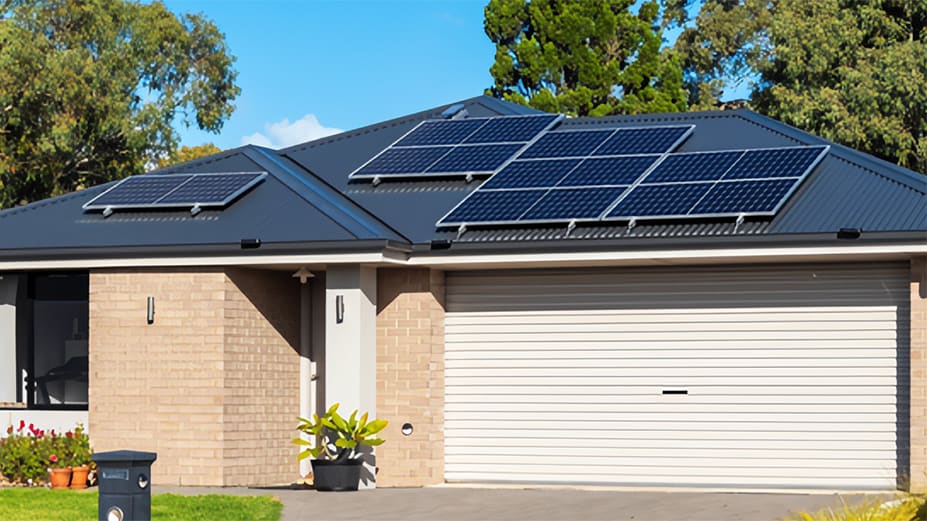Read time: 6 mins
While the environmental advantages of going solar are evident, many non-solar users are concerned about the financial implications of feed-in tariffs. Let's explore the truth behind solar feed-in tariffs and whether the solar industry is ripping off non-solar users.
Solar power is an environmentally friendly and cost-effective energy source that has been gaining popularity in recent years. With solar panels becoming more affordable and accessible, more households are adopting solar power as an alternative to traditional fossil fuel-based energy sources. However, as the solar industry grows, so does the debate over the fairness of solar feed-in tariffs.

What are Solar Feed-in Tariffs?
Feed-in tariffs are incentives that governments provide to solar power producers to encourage the adoption of renewable energy sources. The tariffs involve a solar panel owner selling excess energy produced by their solar panels back to the grid at a premium rate.
Under a feed-in tariff scheme, solar panel owners are paid a premium rate for any excess energy that their solar panels produce and feed back into the grid. The premium rate is often higher than the retail rate that non-solar users pay for electricity.

The Benefits of Feed-In Tariffs For Solar Users
Feed-in tariffs provide a significant financial incentive for solar panel owners to invest in solar power. The premium rate that solar panel owners receive for feeding excess energy back into the grid helps to offset the cost of installing and maintaining solar panels. Additionally, solar panel owners can reduce their energy bills by using the energy produced by their solar panels, further reducing their reliance on traditional energy sources.
The Impact of Feed-In Tariffs On Non-Solar Users
While feed-in tariffs provide a significant financial incentive for solar panel owners, they can have a negative impact on non-solar users. The higher premiums paid to solar panel owners for feeding excess energy back into the grid are often passed on to non-solar users in the form of higher energy bills.
Many people argue that feed-in tariffs unfairly burden non-solar users with higher energy bills, while others contend that the benefits of renewable energy sources, such as reduced emissions, outweigh the financial costs.

Privately owned coal power stations and energy providers operate to maximise profits for shareholders and are not in the best interests of the Australian public.Tweet This
The Role of Government in Feed-in Tariffs
Governments play a crucial role in the implementation of feed-in tariffs. They set the premium rates for solar panel owners and often regulate the energy market to ensure that non-solar users are not unfairly burdened by the incentives.
Alternatives to Feed-in Tariffs
There are alternatives to feed-in tariffs, such as net metering and time-of-use pricing. Net metering allows solar panel owners to receive credits on their energy bills for any excess energy that they produce and feed back into the grid, rather than receiving a premium rate for that excess energy. Time-of-use pricing involves charging different rates for electricity depending on the time of day, incentivising users to shift their energy consumption to off-peak hours when energy is cheaper.

The future of feed-in tariffs
The future of feed-in tariffs is uncertain. As the solar industry continues to grow and mature, governments may transition away from feed-in tariffs towards alternative incentives that are more sustainable and fair to both solar and non-solar users. Some argue that if citizens are already being taxed heavily, they should receive free or heavily subsidised electricity as a basic right.
Feed-in tariffs have been an effective tool for promoting the adoption of solar power, but they have also been a source of controversy and debate. While the incentives have provided significant financial benefits to solar panel owners, they have also led to higher energy bills for non-solar users.
The future of feed-in tariffs is uncertain, but it is clear that governments must carefully consider the impact of renewable energy incentives on both solar and non-solar users.
FAQ's About Solar Feed-in Tariffs
Feed-in tariffs can lead to higher energy bills for non-solar users, as the higher premiums paid to solar panel owners are often passed on to non-solar users.
No, there are alternative incentives such as net metering and time-of-use pricing that can encourage the adoption of solar power.
Governments set the premium rates for feed-in tariffs, and often regulate the energy market to ensure that non-solar users are not unfairly burdened.
The long-term sustainability of feed-in tariffs is uncertain, as the solar industry continues to grow and governments may transition towards alternative incentives.
While feed-in tariffs can lead to higher energy bills for non-solar users, they also encourage the adoption of renewable energy sources, which can have environmental benefits for all users.
Net metering and time-of-use pricing are alternative incentives that can encourage the adoption of solar power without imposing additional costs on non-solar users.
Yes, non-solar users can benefit from solar power through the reduction of overall energy consumption and the use of renewable energy sources.
One disadvantage of feed-in tariffs is that they may lead to an overproduction of solar energy during peak production hours, resulting in wasted energy that cannot be fed back into the grid.



